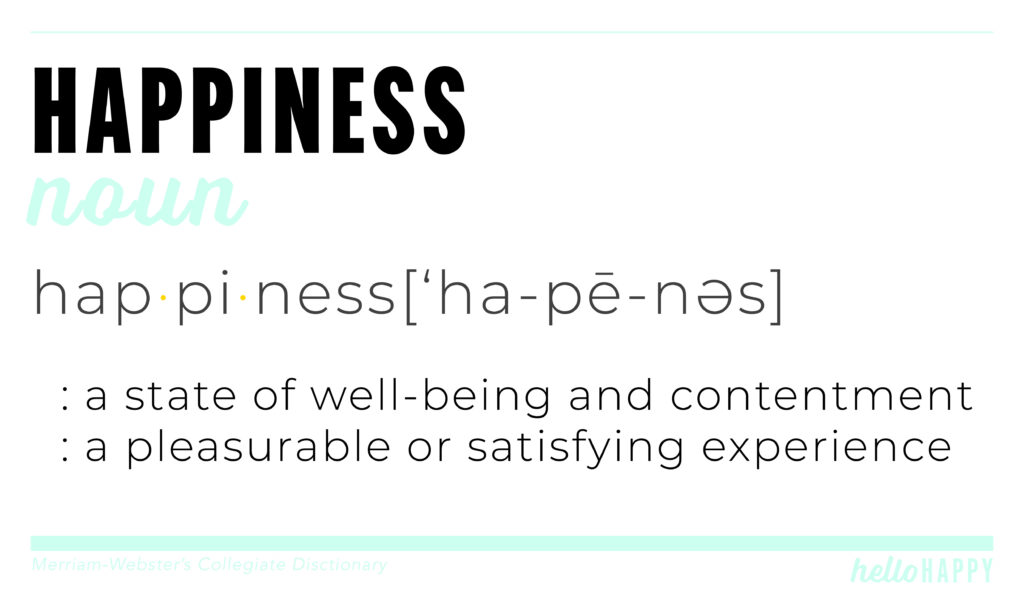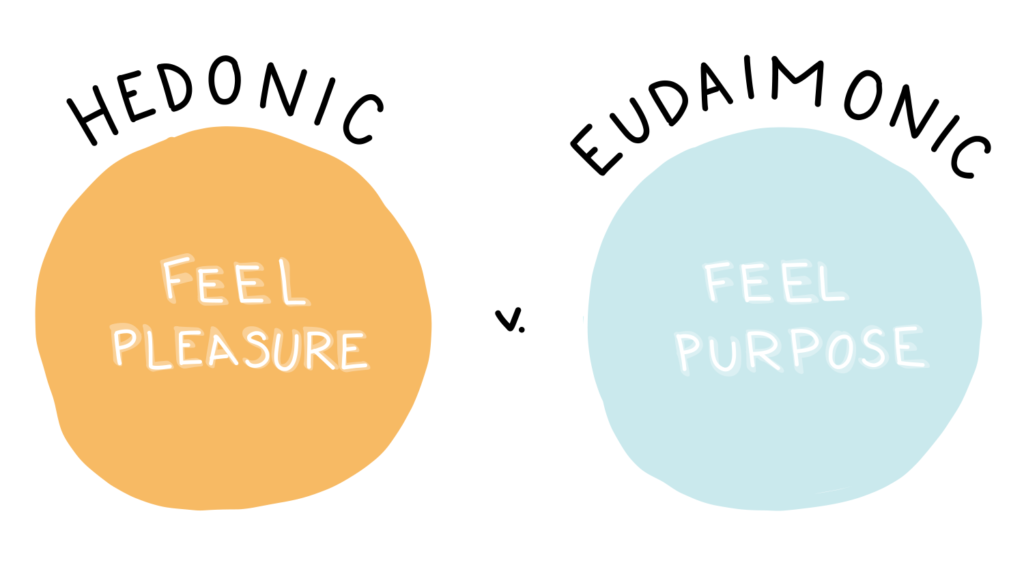Happiness. You know it when you feel it, right? But what is happiness?
The concept of happiness is so fundamental to our existence as human beings that we manage to grasp the idea while struggling to specifically define it. We just know what it means to feel happy. Happiness is being around the people we love. Happiness is a bar of chocolate. Happiness is a sunny day. Happiness is a promotion. Happiness is a growing family. Happiness is when things in our lives are going well.
Because it is all of these things (and much more), the essence of happiness is tricky to widdle down. We could shrug it off and conclude that happiness is within a category of indescribable things that we all just understand. Then again, if anyone is expected to actively foster happiness—in themselves or in others—we need a crystal clear understanding of what “happiness” really means.
Out of Vague
When something is as influential as happiness in affecting our behavior, perceptions, and the choices we make (Mogilner et al., 2012), giving it solid bounds makes it tangible and, thus, malleable. It doesn’t matter that we all inherently understand the concept of happiness to some degree, we need a definition that will function as a beacon.
Case in point: creating happier places. To shape communities and create happier places, urban planners and designers need to have an idea of how such places might look or function. Without defining happiness, designers fail to directly address the intended users’ happiness and, in turn, are unable to measure the effectiveness of their efforts in producing happiness.
According to the Merriam-Webster dictionary, happiness is “a state of well-being and contentment,” or “a pleasurable or satisfying experience.” This is an overly-simplified definition that doesn’t seem to capture the broad use of the term.

Ask One Hundred People, You’ll Get One Hundred Answers
When people attempt to define happiness, it seems as though happiness can mean something different to everyone. Take, for instance, the spectrum of answers provided when The Atlantic asked a group of professors, psychologists, and journalists to define happiness while at the 2015 Aspen Ideas Festival:
The interview answers ran the gamut—happiness is everything from hearing a joke to enjoying an ice cream sundae, to time spent with family.
Yet, an understanding of happiness can indeed be gleaned from the similarities in these answers.
Common Meanings of Happiness
Happiness is understood to relate to our experience in a few ways: as a current emotional report, a remembered emotion, or a life evaluation. We use happiness when talking about different things. In fact, we could be asked three distinct questions—each inquiring about different states of happiness—and nevertheless, understand the specific intent of each question.

This is explained by the authors of the World Happiness Report (WHR) in the first publication of their now annual study of happiness across the globe (Helliwell et al., 2012, p. 11). Even while lacking a definition that parses out the unique experiences of happiness, people inherently understand the nuances between the following questions:
- How happy are you now?
- How happy were you yesterday?
- How happy are you with your life as a whole?
Recognizing the multifacetedness of happiness, we need a solid definition that captures all the various meanings and explains happiness in measurable terms.
Pleasure + Purpose
As The Atlantic discovered in their interviews, asking a group of people to define happiness will uncover a few themes—notably, around pleasure and life’s purpose.
Dating back to the Greek’s concept of eudaimonia (Montgomery, 2014), scientists have distinguished happiness as having two facets: Hedonic and Eudaimonic.

Hedonic happiness is about our experiences. It is an extrinsic measure, considering the degree of pleasure we feel at any moment—reported either as a current experience or a remembered state.
Eudaimonic happiness, on the other hand, is our sense, or our realization, in pursuit of meaning in our lives. It is holistic (looking at the big picture) and intrinsic in that we measure the degree to which we feel a deep sense of meaning and purpose in our lives.
An Encompassing Definition
Embracing both the hedonic and eudaimonic qualities of happiness, Dr. Sonja Lyubomirsky’s definition of happiness is perhaps the most complete. In her 2007 book, The How of Happiness, Dr. Lyubomirsky defines happiness as follows:
Happiness refers to “the experience of joy, contentment, or positive well-being, combined with a sense that one’s life is good, meaningful, and worthwhile.”
Dr. Sonja Lyubromirsky, 2007, p. 32
According to Dr. Lyubomirsky’s definition, we can experience happiness through joy and well-being (hedonic happiness) and we can also sense happiness by living a purposeful, meaningful life (eudaimonic happiness).
There you have it. Short. Sweet. Effective.
How Do You Define Happiness?
Anyone seeking to affect greater happiness in themselves or others will benefit from the bounds of Dr. Lyubomirsky’s specific definition. She offers concise clarity with her definition of happiness, which encompasses both the hedonic and eudaimonic facets of happiness.
NOW TELL ME: How do you define happiness? Does your own understanding of happiness fit within Dr. Lyubomirsky’s definition? After reading her definition, is it easy to recall moments that you’ve felt happy? Can you imagine what might make you happy in the future? There’s space for you to share your thoughts in the comments below.
So, we now have a shared understanding of what happiness is—although, it doesn’t necessarily convey how we might measure or evaluate it. For those answers, you’ll just have to check back for our next post!
Resources
Ackerman, C. E. (2020, January 1). What Is Happiness And Why Is It Important? Positive Psychology. https://positivepsychology.com/what-is-happiness/
Happiness.(n.d.) In Merriam-Webster’s collegiate dictionary. http://www.merriam-webster.com/dictionary/happiness
Helliwell, J. F., Layard, R., & Sachs, J. (Eds.). (2012). World Happiness Report. New York: Earth Institute.
Lyubomirsky, S. (2007). The How of Happiness: A New Approach to Getting the Life You Want. Penguin Books.
Mogilner, C., Aaker, J., & Kamvar, S. D. (2012). How Happiness Affects Choice. Journal of Consumer Research, 39(2), 429–443. https://doi.org/10.1086/663774
Montgomery, C. (2014). Happy City: Transforming Our Lives Through Urban Design. Farrar, Straus and Giroux.
What is Happiness. (n.d.). The Greater Good Science Center. Retrieved September 29, 2020, from https://greatergood.berkeley.edu/topic/happiness/definition

